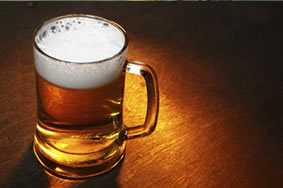Find Micro-breweries close to you – Go to Map and enter your postcode, choose your radius, click filters button, then clear all, then breweries, update.

Beer brewing can be as complex or simple as you wish to make it. There are beer brewing kits available for purchase that simplify brewing–and then there is the art of brewing from scratch.
The Key Ingredient
Before beginning the brewing process, you must first understand the four key ingredients necessary to brew a batch of beer: water, fermentable sugar, hops, and yeast. Each ingredient is integral to the recipe and must be cooked in a certain way to yield a successful batch of brew. Understanding their basic qualities and how each ingredient is meant to react with the others is an important aspect of beer brewing.
- Water: Water is the primary ingredient in beer, so it is very important the water tastes good. If the tap water at your house tastes good to you, then it is fine to use for beer brewing. If you don’t like the way your tap water tastes, then you can use bottled or distilled water instead. If you use tap water, boil it first to evaporate the chlorine and other chemicals that may interfere with the brewing process. Let the water cool before using.
- Fermented Sugar: Malted barley is the ingredient commonly used to fill the sugar quota in a home brew recipe. Some brewers will substitute a percentage of corn, rice, wheat, or other grains to add a lighter flavor to the beer. Beginning brewers should purchase a ready-to-use form of malted barley called malt syrup or malt extract, rather than attempting to malt the grain from scratch, as it is a very complex and touchy process. Using a malt extract will guarantee the fermented sugar is prepared in just the right manner and will act as it needs to throughout the beer brewing process.
- Hops: Hops are cone-like flowers found on a hop vine. They lend the bitter flavor to beer that balances out sweetness. Hops also inhibit spoilage and help keep the “head” (the frothy top when a beer is poured) around longer.
- Yeast: First things first: Do not use bread yeast for beer brewing! Beer yeast is cultivated especially for use in brewing. There are two broad categories of beer yeast: ale and lager. Ale yeasts are top-fermenting, which means they tend to hang out at the top of the carboy while fermenting and rest at the bottom after the majority of fermenting has occurred. Ale yeasts will not actively ferment below 50 degrees F (20 degrees C). Lager yeasts are bottom-fermenters and are best used at a temperature ranging from 55 degrees F (25 degrees C) down to 32 degrees F (0 degrees C). As their names suggest, the type of yeast used plays an important part in influencing the type of beer that will be made. Do not rely on the yeast to define the beer, however, as all of the ingredients play a part in the taste and type of beer you will create.


